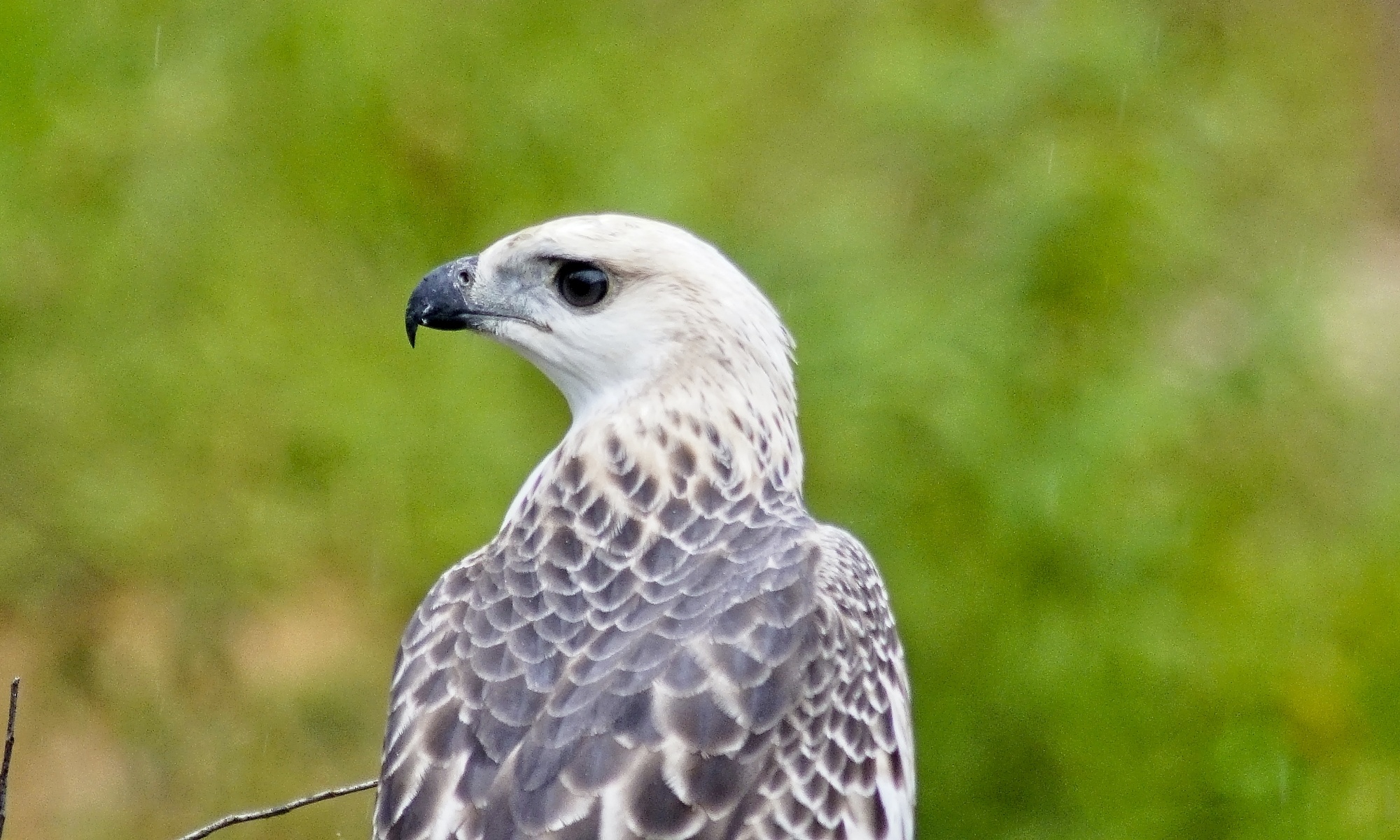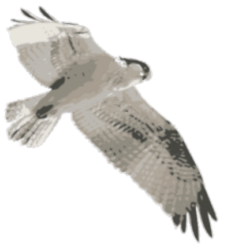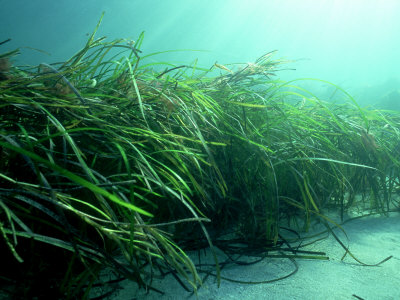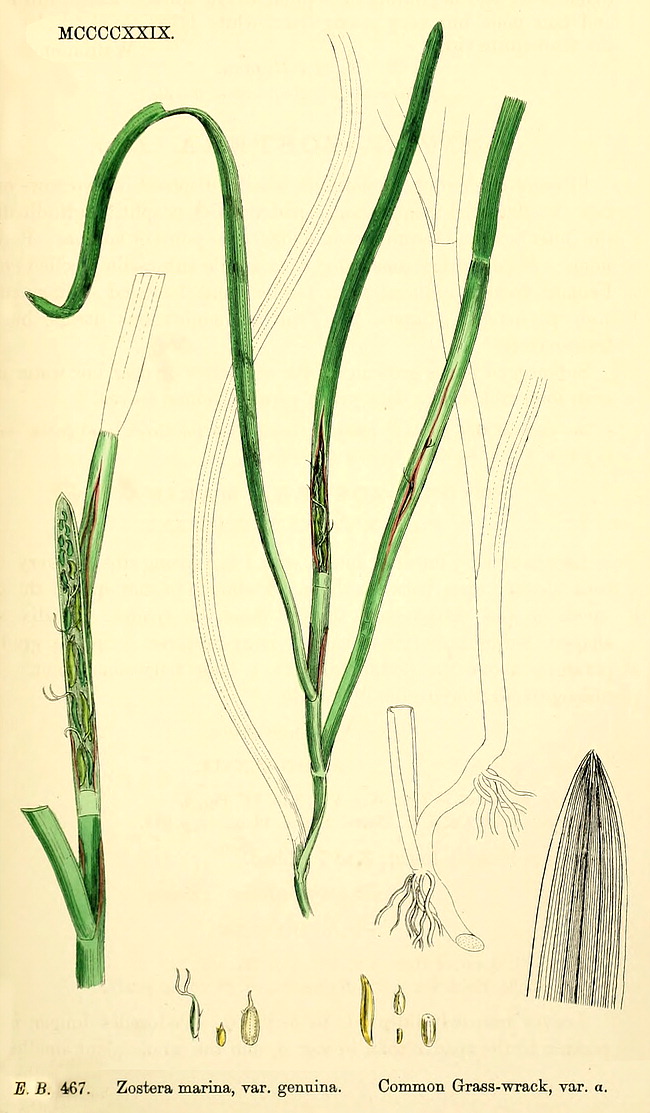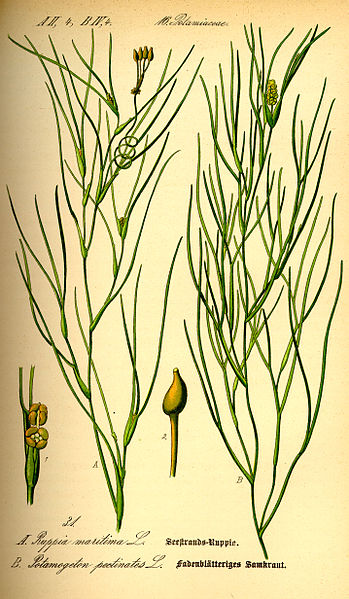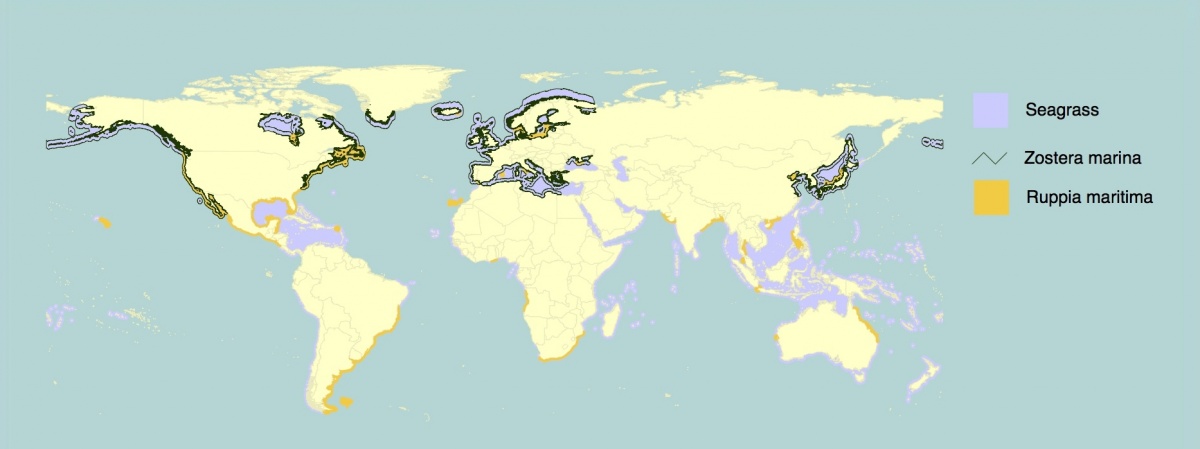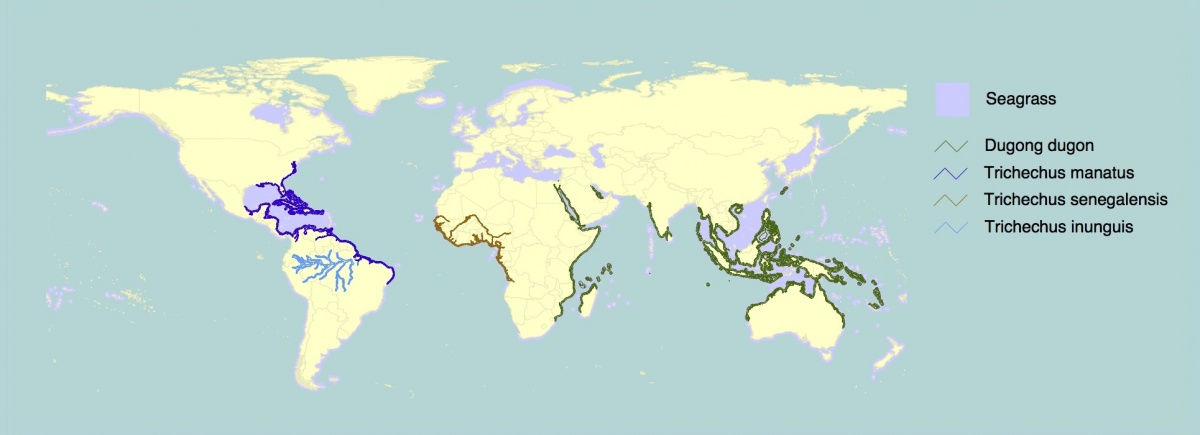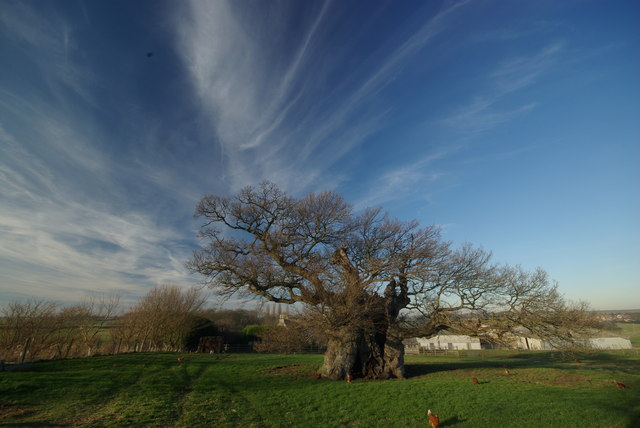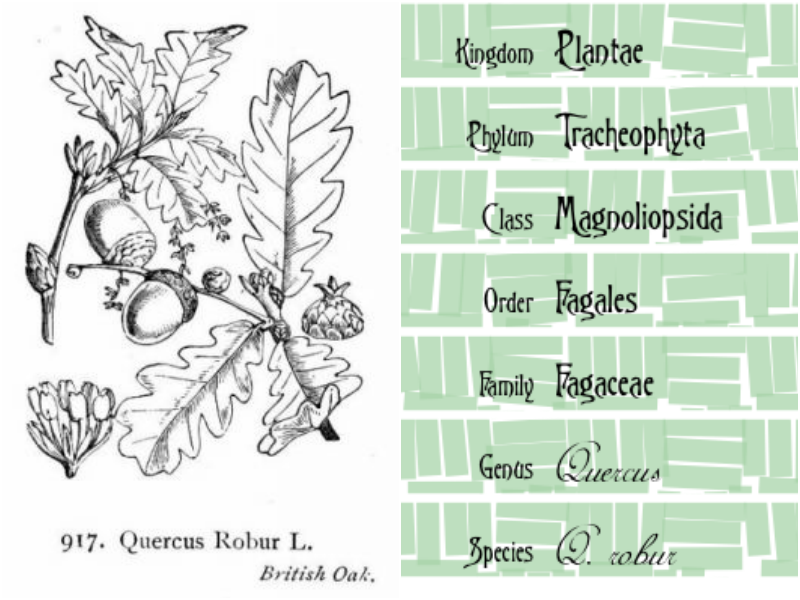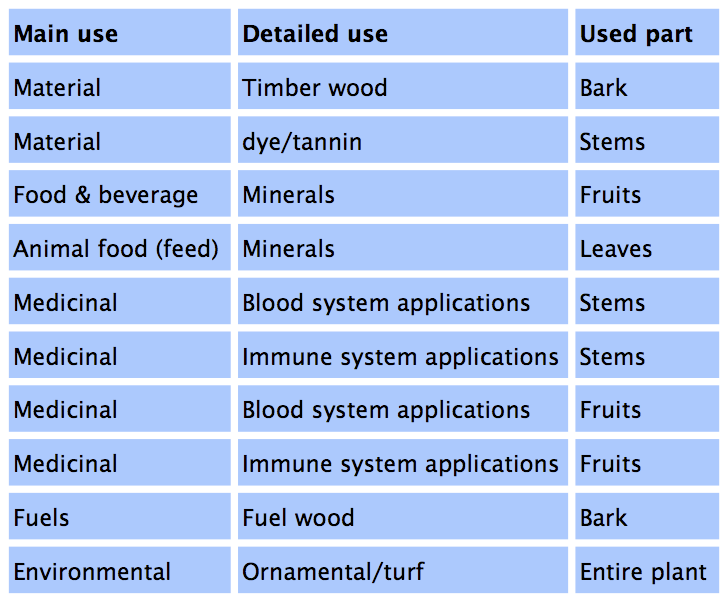Eelgrass –Zostera marina – is a seagrass. Seagrasses grow in shallow waters along coasts. Seagrass beds represent, some say, the third most valuable ecosystem, after estuaries and wetlands. Seagrasses also support a most endearing, but vulnerable mammal, the Dugong or Sea Cow (Dugong dugon).
Most people are aware of marine organisms conquering dry land in the course of evolution, with the fish going on land and developing legs out of fins the most popular image. Hundred million years ago, terrestrial grasses did it the other way around. From land they went back to the sea. This happened three more times, involving different species, resulting today in a number of marine flowering plants that are grouped together as seagrasses. ‘Seagrass’ is not a taxonomic term, but denotes an ecological group: plants that share the same characteristic of spending their whole life – including flowering, fruiting, and germination – under water. That sets them apart from all other marine plants.
Zostera marina
a marine flowering plant
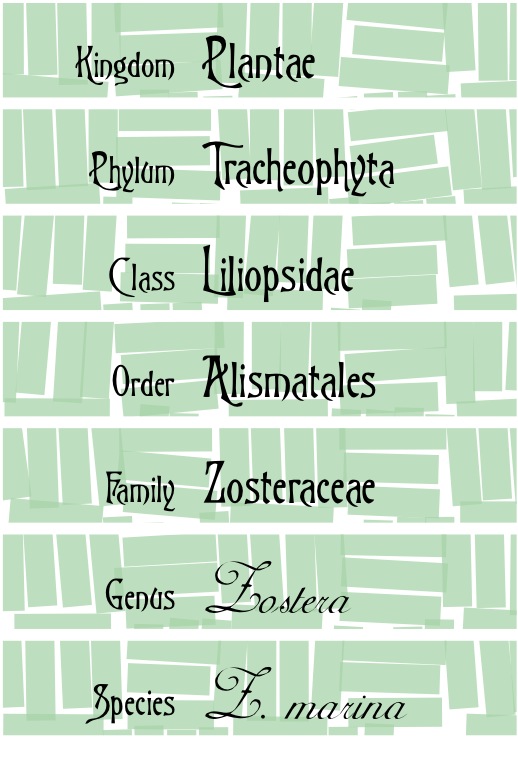
Zostera marina is such a seagrass. It is widespread, occurring along the shores of northern America, Europe and Asia, all in northern latitudes. Other Zostera species (there are sixteen) occur also in southern latitudes, and the genus Zostera is circumglobal, except for Latin America and on the western side of the African continent.
Because of its widespread distribution, the species is richly endowed with names. In English it is known as eelgrass, common eelgrass, narrow-leaved eelgrass, seawrack, or seagrass. Other vernacular names (listed in the World Register of Marine Species) include Обикновена морска трева (Bulgarian); groot zeegras, gewoon zeegras (Dutch); zostère (French); ზღვის ბალახი (Georgian); gemeines Seegras, echtes Seegras (German); smalålegras, ålegras (Norwegian); zostera morska (Polish); miliúrach, milfhéarach, miléarach chaol,miléarach (Scottish Gaelic); smal bandtång, bandtång (Swedish); gwellt-y-gamlas culddail (Welsh). A partially overlapping list in he Encyclopedia of Life records 33 common names.
Z. marina can be found in bays, lagoons, estuaries, and on beaches. Its leaves can grow up to over a meter. It anchors itself with a root system that spreads out, a rhizome. It reproduces sexually and produces fruit, called a nutlet. It can also reproduce vegetatively by sprouting from its rhizome. In this way it can form a meadow-like colony on the seabed, called a clonal colony or genet: a group of genetically identical individuals. Research (Borum, Jens (2004)) found for one such meadow that it was (genetically) 3,000 years old.
It looks like grass, it functions like grass
Z. marina lives up to its common names like seagrass, eelgrass, or the Dutch zeegras. Growing in the sea, it looks like grass with its long leaves. It is not a grass though. Seagrasses belong to four families in the order Alismatales, whereas grasses belong to one family, Poaceae, in the order Poales. Z. marina is however, like terrestrial grass, an important source of food for various species. Chief among them are birds, such as Brant Geese (Branta bernicla), Canada Geese (B. canadensis), Widgeon and Black Ducks (Anas spp.), and Redhead (Aythya americana). But Green Sea Turtles (Chelonia mydas) for instance, graze it too, as do some isopods (crustaceans that include for instance wood lice) and snails. Occasionally caterpillars of the grass moth Dolicharthria punctalis feed on it. The populations of Z. marina in Izembek Lagoon, Alaska, United States and Laguna Ojo de Liebre, Baja California, Mexico, may be the largest Z. marina systems in the world, and are also the primary staging grounds for migratory waterfowl. (Green EP and Short FT, 2003.)
The ecological and socioeconomic value is even greater because of the species that are associated with Z. marina systems and include for instance the Pacific Herring, (juvenile) Atlantic Cod, the Blue Mussel, the alga Entocladia perforans, the Isopod Idotea chelipes, and the sea urchin Paracentrotus lividus.
Humans eat lots of grasses: wheat, oats, rye, rice, corn or maize – these are all grasses. So it’s not a surprise that Z. marina as a grasslike plant was used for food too. People from the Seri tribe of the coast of Sonora, Mexico, ate the rhizomes and leaf-bases, or dried it into cakes for winter food. The plant played such a significant role apparently, that the Seri language has many words related to eelgrass and eelgrass-harvesting. And, as Wikipedia notes furthermore, the month of April is called xnoois ihaat iizax, which means the month when the Eelgrass seed is mature. Eelgrass was also an important source of food for natives of British Columbia and up to today still represents an important cultural value (Green EP and Short FT, 2003).
But it’s good for packing and stuffing too, and even protection from the sea …
Like wheat that produces straw – used for beds, animal fodder, floor cover and more – so Z. marina was used for more than food alone: as packing material (still practiced), as stuffing in mattresses and cushions, as housing insulation, and as thatching material for roofs (Denmark). Wikipedia gives as modern use the production of biomass energy. The Dutch protected themselves by constructing dykes along the former Zuiderzee (now IJssel Lake) from Eelgrass. It used to be a major source of income of residents of the island of Wieringen (from “Wier”, dutch for algae and by which they referred to Eelgrass). When the Zuiderzee was closed and became a freshwater lake (1932), Eelgrass largely disappeared, which was a great loss for the residents in that area.
How many seagrass species are there?
That depends on which species one considers a seagrass. True seagrasses are considered those that are purely marine, occurring only in sea water. That group has twelve genera and some 58 species according to Wikipedia. McCoy ED and Heck KL (1976) in Green EP and Short FT (2003) give a number of 59, but also caution that
… the actual number of seagrass species is a matter of debate, depending in part on their proximity to the marine environment and on the level of discrimination in physical taxonomy and genetics.
Zostera marina belongs to the true seagrasses. There are also plants that are like seagrasses, but occur in brackish water and inland, and some can also grow in marine surroundings.
Widgeon grass
Ruppia maritima or Widgeon grass is such a seagrass-like species, which belongs to the Ruppiaceae, one of three seagrass-like families. R. maritima is, like Z. marina, distributed worldwide. The plant has wide salinity tolerance and occurs in fresh water, brackish water, marine environments, and in hyper-saline conditions, such as land-locked freshwater lakes where salts have been accumulating. Some treat the plant also as a seagrass.
This species has, like Eelgrass, a wealth of common names. Aside from Widegeon grass, it is also known in English as Beaked Tasselweed. Examples of names in other langugages include a/o Snavelruppia (Dutch), småhavgras (Norwegian), Rupia morska (Polish), Scothóga mara (Scotch Gaelic), Hårnating (Swedish), and Tusw arfor (Welsh).

Widgeon grass is grazed by geese, ducks and swans, among them widgeons, ducks of the genus Anas, which explains its name. Green EP and Short FT (2003) mention R. maritima meadows in the Patos Lagoon near the city of Rio Grande, Rio Grande do Sul, covering an area of 120 km2. These meadows are complex habitats and sustain local fisheries
… providing substrate, refuge, nursery and feeding grounds. Associated drift algae can also be locally abundant alternative habitats. Pink shrimp (ca 2800 metric tons landed annually in the region) and the blue crab (ca 1400 tons), found foraging in the seagrass, are important local artisanal fishery resources. Whitemouth croaker (ca 7500 tons) and mullet (ca 2300 tons) also use the Ruppia beds as nursery or foraging grounds. The stout razorclam (Tagelus plebius) is another commercially important species. Predators such as the bottlenose dolphin are common (31-100 individuals within the lagoon system) in the Patos Lagoon and feed principally on whitemouthed croaker which is found in the Ruppia beds.
The Maryland Department of Natural Resources describes it as one of the more valuable waterfowl food sources, and that all parts of the plant have nutritional value. Fish also eat the plant, and they then help the plant to disperse since they transport its fruits inside their guts, as do the birds that eat it. The plant also releases its fruit directly in the water.
R. maritima is considered to have a high economic value in the USA since it supports many animal species that are important in commerce and sport. Wetland restoration often begins with the recovery and protection of R. maritima, and its ecological importance is further increased because of its wide range tolerance of salinity.
The Maryland Department of Natural Resources mentions that it is often found growing together with Z. marina. That may be so for that part of the USA, but Z. marina and R. maritima have otherwise quite distinct separate distributions:
Eelgrass in decline
The IUCN lists R. maritima as Least Concern, but notes that its taxonomy is confused, and therefore its actual range not certain. The IUCN lists Z. marina as Least Concern too, but also notes that there is large scale decline in part of its range due to wasting disease and pollutions threats, areas where it is stable, and areas where it has disappeared completely. Dredging and trawling, as well as harvesting of scallops and mussels, and aquaculture and coastal development in general, damage eelgrass beds as well, or cause it to disappear completely.
Does the decline matter?
Z. marina can form beds on its own, as well as mixed with other sea grasses or seagrass-like plants like R. maritima. In its range, Z. marina is often the dominant species in a sea grass bed. Seagrass beds consist of a variety of seagrass species variously distributed along the coasts of continents the world over. The map below shows the distribution of species richness of seagrass beds. It is clear that in the Asian tropics seagrass systems can be very rich with communities that have up to 15 different species.
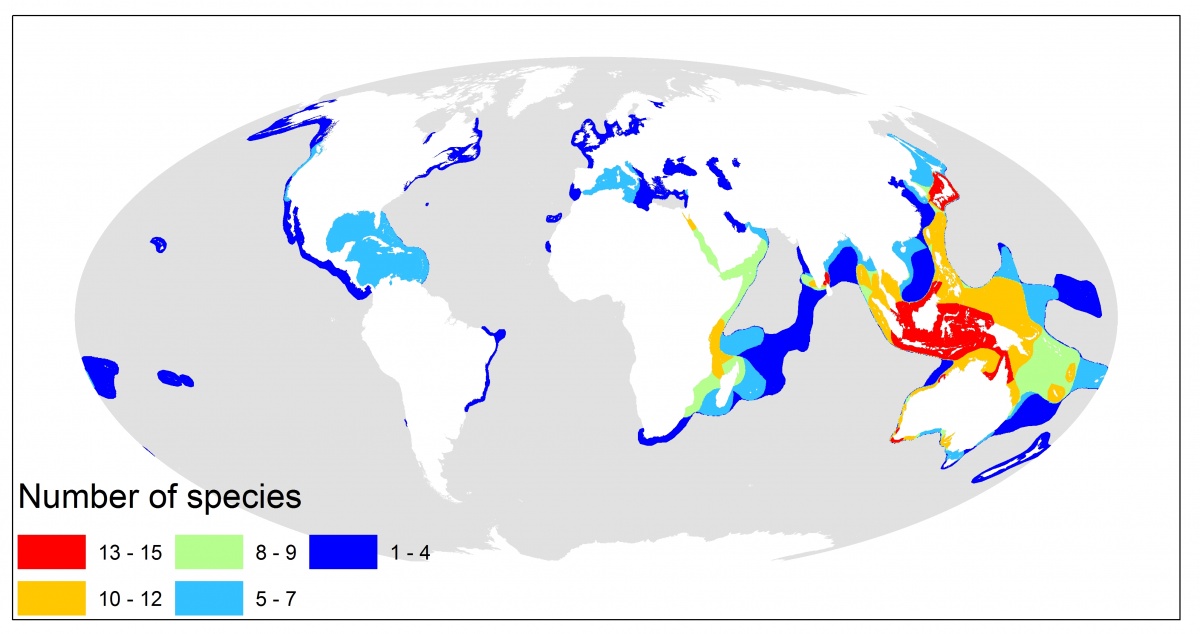
Seagrass systems
(Summarised from Green EP and Short FT, 2003.)
Coastal systems are crucial for the life of other species, many of which have a socioeconomic role in human societies. Seagrass communities are
… an important but under-rated resource for coastal people. Physically they protect coastlines from the erosive impact of waves and tides, chemically they play a key role in nutrient cycles for fisheries, and biologically they provide habitat for fish, shellfish and priority ecotourism icons like the dugong, manatee and green turtle.
Seagrasses form an integral part of highly complex ecosystems. Seagrasses themselves are significant primary producers: using sunlight as a source of energy, they produce lots of organic matter. This productivity is increased by other primary producers, such as algae. This plant material forms an important part of many food chains. The three-dimensional structure of seagrass systems provides a/o shelter and cover for other species, binds sediments and can influence currents. All this result in many species being associated with such systems. Some species cannot live in places other than seagrasses, other species rely on them for shorter or longer part of their life. Seagrass systems form therefore a prerequisite for a high level of biodiversity along the coast where they occur. For instance, in Florida, USA, 113 species of algal epiphytes (algae that live on other plants) were recorded associated with seagrass systems. Other numbers include 450 of algal epiphytes, 248 arthropods, 197 mollusks, 171 polychaetes, and 15 echinoderms in New South Wales, Australia. In Florida 100 species of fish were reported, and 30 species of crustaceans. Species that depend exclusively on seagrass systems range from epiphytic algae to manatees and dugong.
Fourteen functions and values of seagrass ecosystems are distinguished in the report, including primary production (which renders them a critical source of food for many species, and which is exported to adjacent ecosystems), nutrient and contaminant filtration (improving water quality), oxygen production (supporting water quality improvement), nutrient regeneration and recycling (efficient nutrient recycling supports overall ecosystem productivity), wave and energy dampening (reducing erosion and turbidity and increasing sedimentation), and carbon sequestration (important for reducing the increase of CO2 levels that fuels climate change).
Seagrass and algae beds are considered the third most valuable ecosystem globally. Waycott, Michelle et al. (2009) put the value of seagrass systems at 1.9 trillion USD per year in the form of nutrient cycling. The importance of seagrass systems for carbon management is highlighted too on various other places (e.g. here, here, and here). Green EP and Short FT (2003) put it in this perspective (literature references removed):
The role of the worlds oceans in removing carbon dioxide from the atmosphere is still being investigated and remains poorly understood. It appears that biological processes in the surface layers of the world’s oceans are one of the few mechanisms actively removing carbon dioxide from the global carbon cycle. Within these processes, seagrasses clearly have a minor role to play, although their high productivity gives them a disproportionate influence on primary productivity in the global oceans on a unit area basis, and they typically produce considerably more organic carbon than the seagrass ecosystem requires. Any removal of carbon either through binding of organic material into the sediments or export into the deep waters off the continental shelf represents effective removal of carbon dioxide from the ocean-atmosphere system which could play some role in the amelioration of climate change impacts.
So, yes, the decline does matter …
Many of the species thus associated with and depending on seagrass systems form important sources of food and income for human communities. Coastal communities benefit furthermore from these systems through protection from for instance coastal erosion and storm surges.
Where people used Zostera marina for food and other purposes and such is no longer the case, the direct impact of a decline in Z. marina is perhaps no longer significant. However, both Zostera marina and Ruppia maritima constitute sources of food for many species of birds and fish that are important to human populations, and, as the above describes, both species are an essential part of the system that they and other seagrasses form. The systems as a whole are of great importance, even where a single species might not be of direct importance for humans, and these systems cannot exist without the individual species of seagrass that form the backbone and basis of a complex, interdependent array of hundreds of different species of a large spectrum of taxonomic groups.
Sadly, seagrasses as habitats are in decline too. Waycott, Michelle et al. (2009), assessed 215 different studies and found
… that seagrasses have been disappearing at a rate of 110 km2 yr-1 since 1980 and that 29% of the known areal extent has disappeared since seagrass areas were initially recorded in 1879.
They note furthermore that rates of decline have accelerated from 0.9% per year before 1940 to 7% per year since 1990. They produced a geographic overview of gains and losses, but note that
Major gaps in information exist for West Africa, northeast South America, and the northwest Pacific area of the United States, where seagrasses are typically restricted in distribution. However, the largest data gap exists in the tropical Indo-Pacific region (from East Africa to Hawaii), where seagrasses are widespread and abundant. Seagrasses in this region perform vital ecosystem services for local human populations, support numerous elements of local economies (8), and are food for endangered species such as dugong and green turtle (22). Furthermore, this region has the highest number of seagrass species, including several endemic species (22).
Dugong and managetees
Among the animals that rely to a greater or lesser degree on seagrass beds are a group of marine mammals, the manatees and Dugong. Of these, the Dugong or Dugong dugon is probably the most well known. Also known as sea cow, the Dugong occurs along the northern shores of the Australian continent, the shores of south and south-east Asia, the Indian subcontinent, the middle east, and the west side of the African continent, as well as northwards along the coast of Vietnam and Japan.
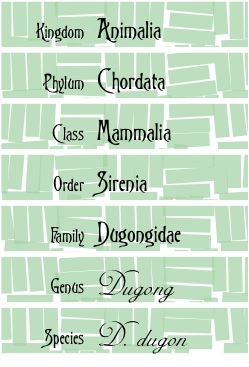
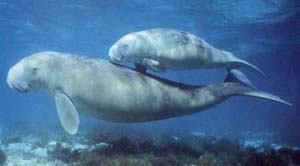
The Dugong relies heavily on seagrasses. It uses it for food, and it finds shelter there. Manatees, Trichechusspp., belong to the same order of Sirenia. ForT. manatus seagrasses are an important staple. T. senegalensis relies more on herbaceous food and grasses, among which Ruppia spp. Living in the Amazon basin, T. inunguis does not have use for seagrasses.
The distribution of these four species, illustrated in the map below, is striking. They all four live in the tropics and subtropics, but their ranges do not overlap, except for where T. inunguis and T. manatus meet at the mouth of the Amazon.
Vulnerable species and seagrass destruction
(Summarised from Marsh, Helene et al., 2002)
The Dugong is listed by the IUCN as a vulnerable species. The animal is believed to be represented by relict populations: the populations were more numerous and more widespread in historical times. Populations are now separated by large areas where its numbers have been greatly reduced or where it no longer exists. Its range is now fragmented. Dugongs are seagrass specialists and need seagrass beds to survive and reproduce. Where seagrass beds are destroyed, the Dugong disappears. Other causes of the decline of Dugongs are accidental entangling in mesh nets and traps for fishing; hunting for meat, oil, and medicament; and being struck by boats. Destruction of seagrass beds can be extensive. Mining and trawling destroy seagrass directly. Dredging, land clearing and land reclamation cause disturbances: an increase of sedimentation and turbidity, which lead to degradation of seagrass extent, density and productivity through smothering and lack of light. Extreme weather events such as cyclones / typhoons and floods can lead to losses of hundreds of square kilometers of seagrass. Such losses are thought to be mostly caused by sedimentation increase and/or an increase in epiphytes due to an enrichment in nutrients. It is not always possible to separate natural and man-made causes of seagrass loss. Risks exist also in the runoff of herbicides from agricultural lands, specifically sugarcane production areas that areadjacent to seagrass beds.
The Smithsonian identifies runoff from land as the most important cause of seagrass disappearance. Both Zostera marina and Ruppia maritima are classified as Least Concern. Seagrass beds as a system are not classified in such a way, but clearly, the system is under pressure, even if species are still only Least Concerned. The decline of seagrass beds impacts directly on people’s livelihoods (all sorts of fisheries) and ultimately national economies.
Conservation
Various initiatives try to address the decline. As noted above, information gaps exist on seagrass. One project that aims to help close those gaps is Seagrasswatch, a ‘global scientific, non-destructive, seagrass assessment and monitoring program’. Now active in 17 countries, with an additional nine participating countries, it aims to;
… raise awareness on the condition and trend of nearshore seagrass ecosystems and provide an early warning of major coastal environment changes. The Seagrass-Watch program has a simple philosophy of involving those who are concerned, and involves collaboration/partnerships between community, qualified scientists and the data users (environment management agencies).
Other initiatives work in the field on actual management. In Madagascar for instance are several projects that aim to halt the decline by establishing community managed areas along the coast. These projects also address the value that coastal systems (mangroves, seagrass) have for halting the increase of CO2
in the atmosphere, and therefore for minimising the rise of global temperatures and the impacts of subsequent climate change.
A project like the Blue Carbon Project focuses on offsetting emissions by conserving ocean vegetation. It describes ‘identifying effective, efficient and politically acceptable approaches to reduce the atmospheric concentration of CO2 as one of society’s most pressing goals’. It formulates as the blue carbon solution:
One of the most promising new ideas to reduce atmospheric CO2 and limit global climate change is to do so by conserving mangroves, seagrasses and salt marsh grasses. Such coastal vegetation, dubbed “blue carbon”, sequesters carbon far more effectively (up to 100 times faster) and more permanently than terrestrial forests. Carbon is stored in peat below coastal vegetation habitats as they accrete vertically. Because the sediment beneath these habitats is typically anoxic, organic carbon is not broken down and released by microbes. Coastal vegetation also continues to sequester carbon for thousands of years in contrast to forest, where soils can become carbon-saturated relatively quickly. Therefore, carbon offsets based on the protection and restoration of coastal vegetation could be far more cost effective than current approaches focused on trees. Furthermore, there would be enormous ad-on benefits to fisheries, tourism and in limiting coastal erosion from the conservation of blue carbon.
International agreements
The Dugong migrates. It can travel substantial distances and crosses international borders when doing so. The Convention on the Conservation of Migratory Species of Wild Animals or CMS “aims to conserve terrestrial, aquatic and avian migratory species throughout their range”. With 120 countries as parties as of May 2014 a number of mammals, birds, insects, fish and reptiles that migrate and cross international borders, are subject to specific conservation attention under the CMS. The Dugong is covered by this convention.
The CMS works a/o with Memoranda of Understanding. One such is the Memorandum of Understanding on the Conservation and Management of Dugongs and their Habitats throughout their Range or Dugong MoU. While seagrasses themselves are not subject of any specific international agreement, in the range of the Dugong they get special attention, since they are the primary habitat of Dugongs. One instrument of the Dugong MoU is the Conservation and Management Plan for the Dugong MoU. According to that plan, countries will work on activities such as identifying, assessing and evaluating threats to Dugong populations and develop measures to address these threats. Another activity is that countries will reduce to the greatest extent practicable the incidental capture and mortality of dugongs in the course of fishing activities. Countries will also identify and map areas of important Dugong habitat such as seagrass beds. The problem is of course that many countries that harbour Dugong and seagrasses often lack the necessary resources, be they financial, technical, institutional or human resource wise.
A new project of the Global Environment Facility (GEF) is about to start, the Enhancing The Conservation Effectiveness of Seagrass Ecosystems Supporting Globally Significant Populations of Dugongs Across the Indian and Pacific Ocean Basins project. This Dugong and Seagrass Conservation project(as the short title goes) is developed in the context of the Dugong MoU, will work through a number of national projects that focus on protection, policies, awareness, inventories and other topics. A project like this addresses also the resource issues mentioned above. This specific project also aims to achieve greater regional coordination and integration, something that species and systems that cross international borders and are marine clearly need. It aims also to help address the information gaps on seagrasses.
Will it be enough?
There are of course many more projects that work on Dugongs, manatees or seagrass systems or coastal environments in general. For the time being, losses appear greater then areas or populations that are preserved. The question can also be asked whether it is more important to conserve the Dugong or seagrass beds. I personally think that seagrasses as a system are more important to conserve (a mix of preserving and using them wisely), than Dugong. In the end, seagrass systems sustain coastal communities more than the Dugong as a single species. The Dugong, however, is more pattable than seagrasses can ever be. Dugongs are therefore seen as more effective conservation ambassadors and is indeed used as a vehicle as in the Dugong MoU of the CMS.
An important factor in conservation success will be whether countries will realize the socio-economic importance of seagrass beds. Lots of people adhere to the idea that conservation is a luxury, and nature protection should be paid for by a robust economy. In such thinking, harbour development, for instance, trumps seagrass (or coral, or mangrove) preservation, as trade is seen as a greater contributor to the economy than those ecosystems. Economic policies should however realize and acknowledge that the economy is based on healty natural systems. As long as policy and decision makers think the other way around, conservation and preservation will be in the losing seat.
And, as always, climate change is as yet the scary unpredictable factor, the full impact of which on coastal systems is not yet known. One factor is coastal depth. Seagrasses grow in shallow waters. The more seas rise, the more seagrass beds may come under great stress due to lack of light. Seagrass system survival may then depend on the speed with which they are capable (and allowed) to colonise new areas opened up by shorelines creeping inland to make up for areas that have grown too deep to sustain them. The threat of climate change and sea level rise is mentioned on several places in Green EP and Short FT (2003), but they also note that in some places, coral reefs may replace seagrasses. Whether that will happen, depends of course also on how well coral reefs will weather climate change effects. Factors such as temperature and acidity will affect both seagrass and coral species in various degrees, where corals are specifically sensitive to changes in acidity. The next question is then, if certain seagrass species are capable of successful adaptation, which of the species now associated with seagrass ecosystems will likewise be capable of adapting?
Sources
Reports
Borum, Jens, Carlos M Duarte, Tina M Greve, and Dorte Krause-Jensen. (2004). European Seagrasses: An Introduction to Monitoring and Management. M&MS Project.
Green EP, Short FT (2003). World atlas of seagrasses. Prepared by UNEP World Conservation Monitoring Centre. Berkeley (California, USA): University of California. 332 pp. URL: https://archive.org/details/worldatlasofseag03gree
Marsh, Helene, Helen Penrose, Carole Erose, and Joanna Hugues (2002). Dugong : Status Report and Action Plans for Countries and Territories. Nairobi, Kenya: United Nations Environment Programme, 2002.
McCoy ED and Heck KL (1976) Biogeography of corals, seagrasses and mangroves: An alternative to the center of origin concept. Sys Zool 25:201-210. In: Green EP, Short FT (2003). World atlas of seagrasses. Prepared by UNEP World Conservation Monitoring Centre. Berkeley (California, USA): University of California. 332 pp. URL: https://archive.org/details/worldatlasofseag03gree
Waycott, Michelle, Carlos M Duarte, Tim J B Carruthers, Robert J Orth, William C Dennison, Suzanne Olyarnik, Ainsley Calladine, and others. “Accelerating Loss of Seagrasses Across the Globe Threatens Coastal Ecosystems.” Proceedings of the National Academy of Sciences of the United States of America 106, no. 30 (2009): doi:10.1073/pnas.0905620106. Online accessible via http://www.pnas.org/content/106/30/12377.full.pdf+html
Online sources
Wikipedia entries:
http://en.wikipedia.org/wiki/Seagrass
http://en.wikipedia.org/wiki/Zostera
http://en.wikipedia.org/wiki/Zostera_marina
http://en.wikipedia.org/wiki/Ruppia_maritima
IUCN Red List information:
Zostera marina: http://www.iucnredlist.org/details/153538/0
Ruppia maritima: http://www.iucnredlist.org/details/164508/0
Dugong dugon: http://www.iucnredlist.org/details/summary/6909/0
Trichechus inunguis: http://www.iucnredlist.org/details/22102/0
Trichechus manatus: http://www.iucnredlist.org/details/22103/0
Trichechus senegalensis: http://www.iucnredlist.org/details/22104/0
Catalogue of Life:
Zostera marina: http://www.catalogueoflife.org/col/details/species/id/19165377/source/tree
Ruppia maritima: http://www.catalogueoflife.org/col/details/species/id/19165152/source/tree
Dugong dugon: http://www.catalogueoflife.org/col/details/species/id/19736003/source/tree
World Register of Marine Species (WoRMS):
Zostera marina: http://www.marinespecies.org/aphia.php?p=taxdetails&id=495077
Ruppia maritima:http://www.marinespecies.org/aphia.php?p=taxdetails&id=234031
Encyclopedia of Life:
Zostera marina: http://eol.org/pages/1089042/overview
Ruppia maritima: http://eol.org/pages/1089003/overview
Convention of Migratory Species of Wild Animals (CMS):
CMS general: http://www.cms.int/
CMS Dugong information: http://www.cms.int/en/species/dugong-dugon
CMS Dugong MoU: http://www.cms.int/en/legalinstrument/dugong
Other:
Dep. of Nat. Res. of Maryland, USA, on Ruppia maritima: http://www.dnr.state.md.us/bay/sav/key/widgeon_grass.asp
http://www.npwrc.usgs.gov/resource/plants/ruppia/
http://www.seagrasswatch.org/seagrass.html
http://www.seagrassli.org/ecology/what_is_seagrass.html
http://www.sms.si.edu/irlspec/Ruppia_mariti.htm
http://ocean.si.edu/seagrass-and-seagrass-beds
http://www.unep-wcmc.org/resources-and-data
http://www.ecomare.nl/en/encyclopedia/organisms/plants/flowering-plants/eelgrass/
http://www.thebluecarbonproject.com/the-problem-2/
The GEF Dugong and Seagrass Conservation project: http://www.thegef.org/gef/project_detail?projID=4930
